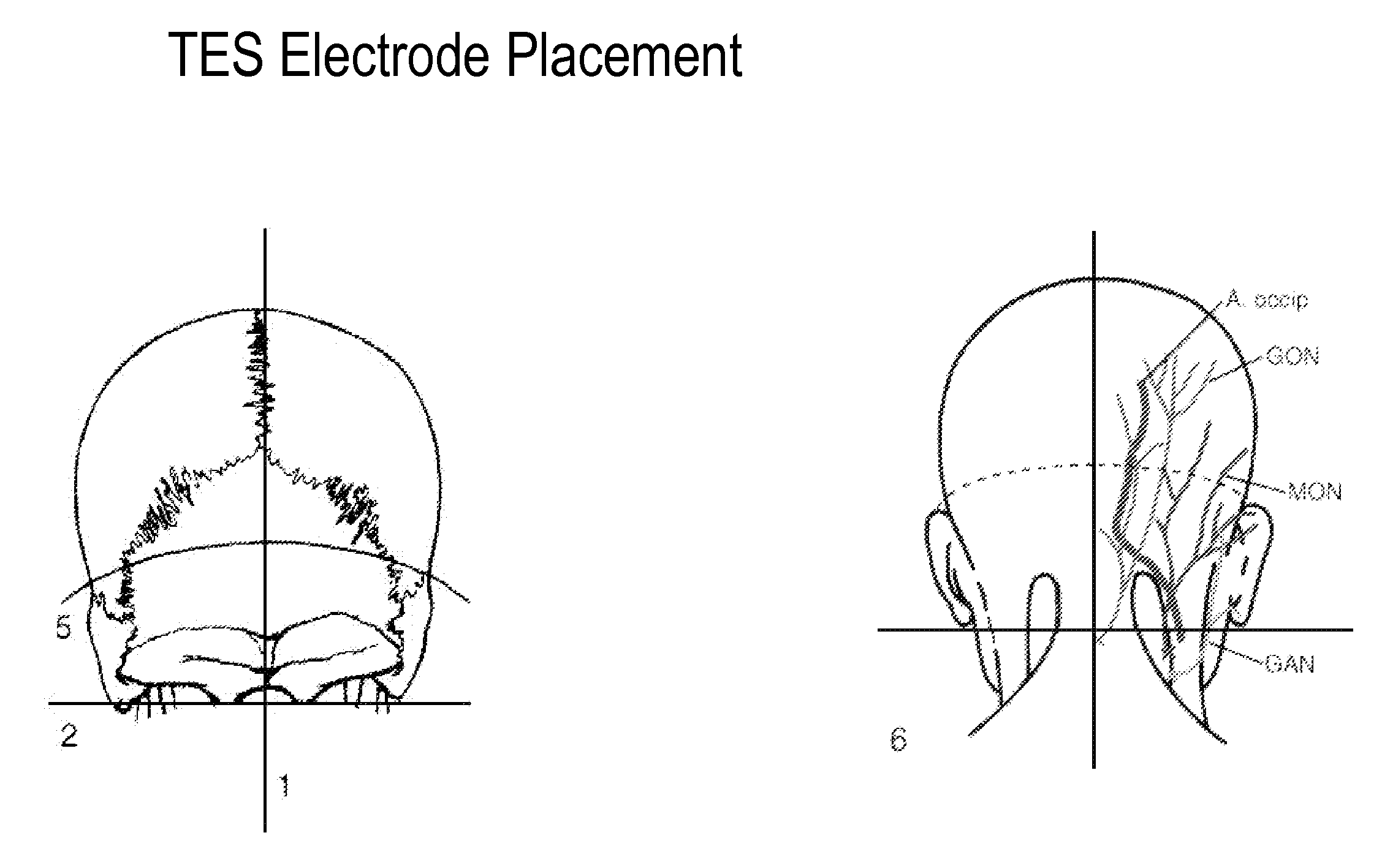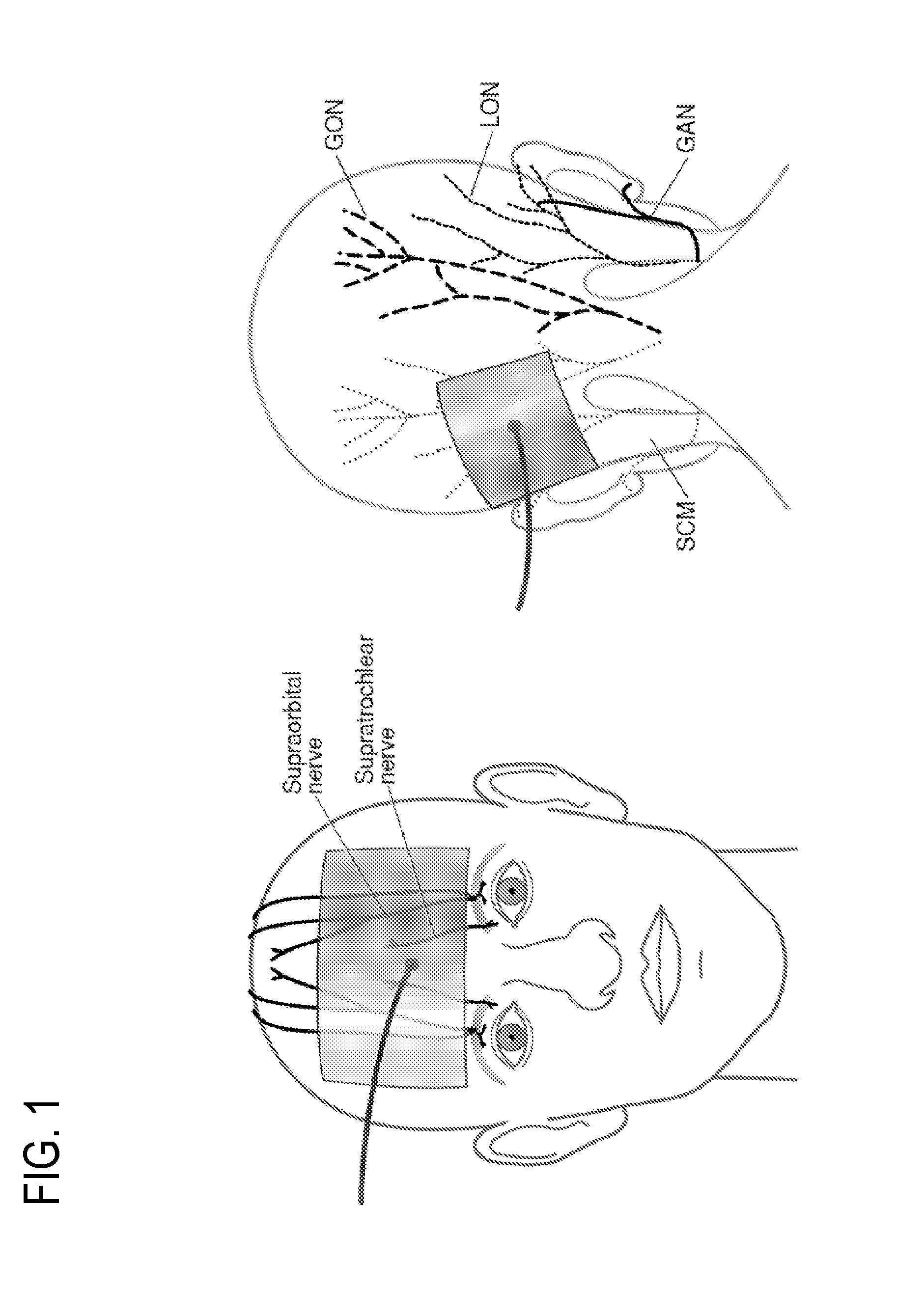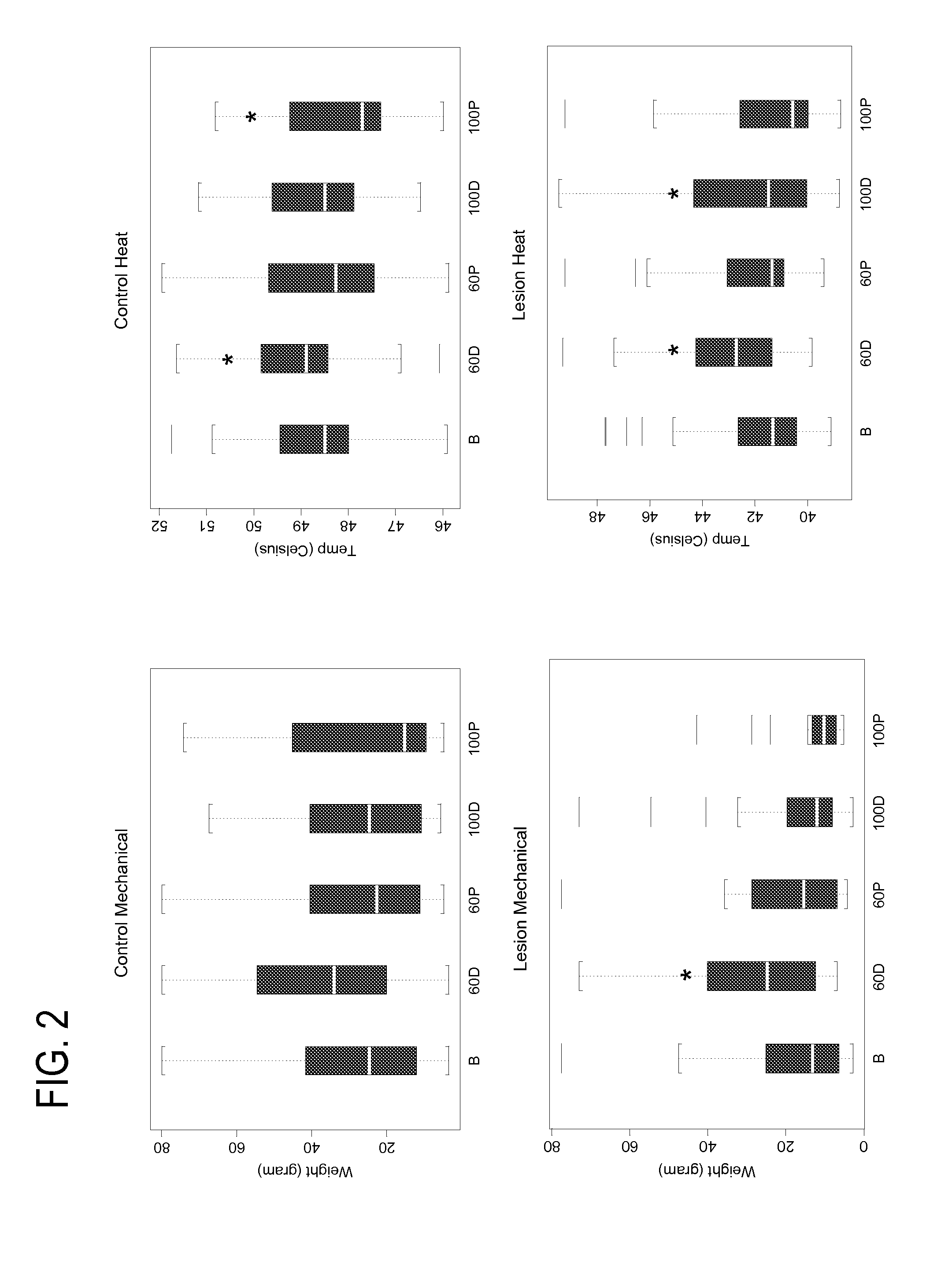Eliciting analgesia by transcranial electrical stimulation
a transcranial electrical stimulation and analgesic technology, applied in the direction of external electrodes, internal electrodes, therapy, etc., can solve the problems of accelerating abandoning and superseding efforts, etc., to achieve accelerated healing of facial abrasions and functional improvement
- Summary
- Abstract
- Description
- Claims
- Application Information
AI Technical Summary
Benefits of technology
Problems solved by technology
Method used
Image
Examples
example 1
TES Apparatus and Methodology
[0066]TES apparatus. The multipurpose TES device should be capable of providing a stable output current over a wide range of loads by utilizing an integrated circuit (IC) of the type XTR110 (Burr-Brown, Tucson, Ariz. USA) or similar, with simultaneous measurements by a digital panel voltmeter DMS-20PC (Datel, Inc., Mansfield, Mass. USA) or similar. The automatic computation of the AC MAD (Mean Absolute Deviation) value is performed by IC RMS (Root Means Square)-to-DC converter AD736 (Analog Devices, Norwood, Mass. USA) or similar. Stable frequency tuning over the desired range is provided by IC voltage-to-frequency converter AD654 (Analog Devices, Norwood, Mass. USA) or similar, which includes precision oscillator. The apparatus includes controls for manual adjustment of pulse duration, DC:AC ratio, TES frequency and the current value. Frequency and current values are continuously monitored on the front panel of the TES device.
[0067]Change in polarity of...
example 2
Antihyperalgesic and Hypoalgesic Effects of TES in Validated Experimental Human Pain Models
[0081]Methods. 20 healthy male subjects were tested to determine the antihyperalgesic and hypoalgesic effects of TES applied at 60 Hz (TES60 Hz) and at 100 Hz (TES100 Hz) by evaluating to thermal heat and mechanical pain in experimentally induced ultraviolet B skin inflammation (UVB lesion) and normal skin. The study was conducted in a double-blind, randomized, two way crossover fashion. TES was administered for 35 min. Quantitative sensory testing (QST) evaluating heat and mechanical pain thresholds was conducted during TES and 45 min after TES was discontinued.
[0082]A constant-current TES apparatus including controls for manual adjustment of pulse duration, DC:AC ratio, TES frequency and current value, that was in compliance with the safety standards established by the Hospital Instrumentation and Electrical Safety Committee of Stanford University was used. The TES current value was continuo...
example 3
A. Cognitive Drug Research System Battery of Tests
[0089]Human volunteer studies were performed using TES stimulation at two frequencies: about 60 Hz and about 100 Hz for approximately 35 minutes. The results showed increased concentration and ability to perform tasks, and increased neurocognitive function, especially improving the quality of episodic secondary memory at both frequencies. Assessment of the subjects' cognitive function was conducted using an FDA-approved, computerized Cognitive Drug Research System battery of tests (herein “CDR tests”) (United BioSource Corporation, Bethesda, Md. USA), administered at baseline (15 min prior to each TES session), and again 15 min after the end of each TES session. The CDR tests have been used extensively in clinical trials for over 20 years; it demonstrates good test-retest reliability, excellent criterion validity, discriminant validity and construct validity. They are sensitive to a variety of pharmacological and non-pharmacological ...
PUM
 Login to View More
Login to View More Abstract
Description
Claims
Application Information
 Login to View More
Login to View More - R&D
- Intellectual Property
- Life Sciences
- Materials
- Tech Scout
- Unparalleled Data Quality
- Higher Quality Content
- 60% Fewer Hallucinations
Browse by: Latest US Patents, China's latest patents, Technical Efficacy Thesaurus, Application Domain, Technology Topic, Popular Technical Reports.
© 2025 PatSnap. All rights reserved.Legal|Privacy policy|Modern Slavery Act Transparency Statement|Sitemap|About US| Contact US: help@patsnap.com



